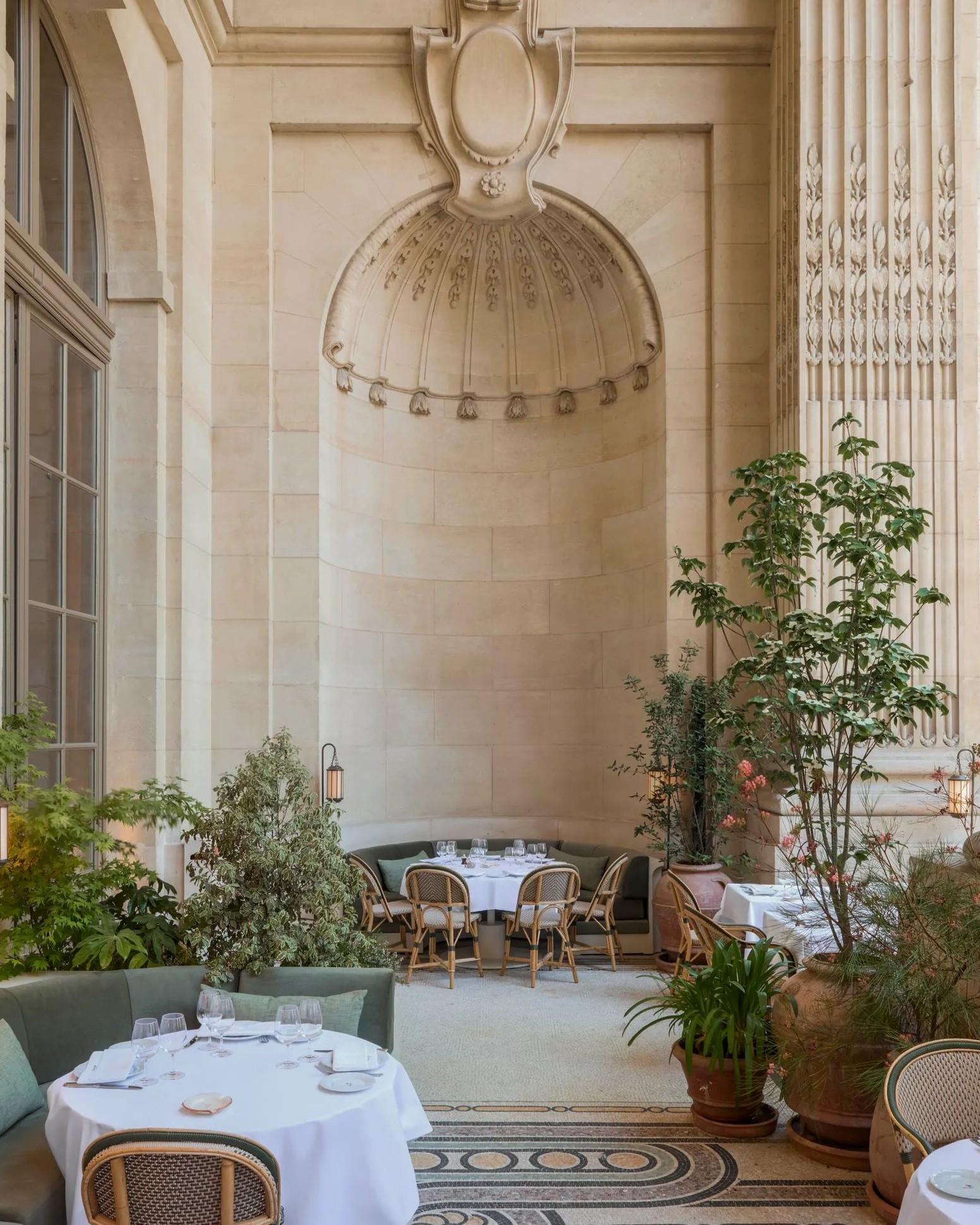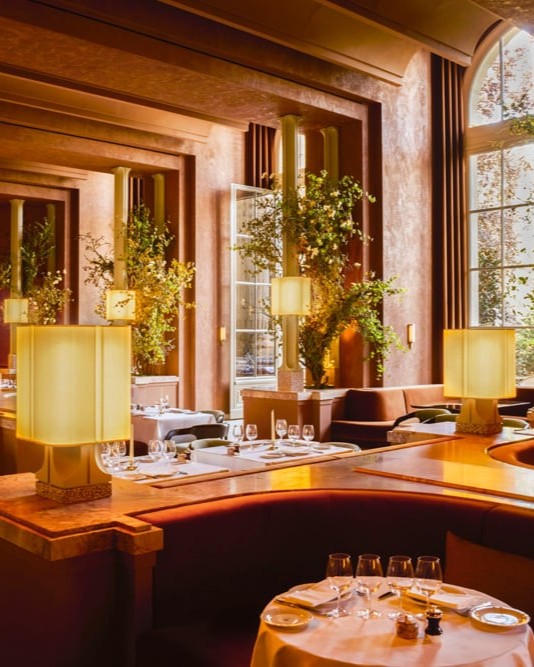Taking Over Historical Monuments: The Luxury Trend to Cement Legitimacy
Cultural and architectural landmarks are no longer simple locations to visit. In recent years, luxury brands have boldly managed to attach themselves to monuments or take over historic sites.
Luxury needs walls as iconic as its shop windows
Anthony Mathé, semiologist and consultant
Imagine a lunch in Paris, under the legendary glass roof of the Grand Palais, once home to the Museum of Iron and Glass. The Grand Café has reclaimed the site, turning monumentality into intimacy — “a blend between a train station, a cathedral, and a theater,” as decorator Joseph Dirand puts it. Behind the great columns, the Belle Époque terrace, decorated with original mosaics and planted with magnolias, offers one of the most beautiful views of the French capital. Inside, the majestic scale is softened by noble materials — marble, velvet, precious woods — and dimmed lighting designed to make one forget the enormity of the space.
Newsletters
Cet article vous plaît ?
Inscrivez-vous à nos newsletters pour recevoir les dernières publications et analyses selon nos 4 thématiques:
Taking Over a Piece of National Heritage
The harmony strikes a subtle balance between Belle Époque nostalgia and warm modernity. Chef Benoît Dargère’s cuisine combines French tradition with elegant freshness — deviled eggs, white asparagus, seafood dishes, and seasonal salads — punctuated by a few bold flourishes. The bar is run by Colin Field, the Ritz legend, who offers signature cocktails such as the “Serendipity,” a refined mix of Calvados, apple juice, fresh mint, and champagne.
Together, this season’s revival delivers a powerful manifesto: palace life is no longer confined to art exhibitions or official receptions — it now means brunch under the columns, jazz at dusk, cocktails in the shade (or rather, the light) of a reinvented historic setting. When luxury sits at the table beneath the glass ceilings of History, it is savored. By settling in the Grand Palais, the Grand Café perfectly illustrates this major trend: luxury brands investing in historic sites. The idea is simple — to embody in stone what collections express in fabric.


In truth, Dargère’s menu and Field’s cocktails are mere extensions of a script designed as large-scale storytelling. Here, a meal becomes a chapter, the terrace a parenthesis, the façade a character. In short, it is a stage where one is sold not only a lobster salad but a slice of heritage emotion. At the Grand Palais, luxury plays another card: the total experience. Joseph Dirand designed a monumental interior that references Belle Époque architecture but tempers its coldness with noble materials. Thierry Boutemy created a terrace garden that lightens the weight of the building. The promise is clear: dining here is not just “going to a restaurant,” it is about claiming a piece of national heritage.
As semiologist and consultant Anthony Mathé puts it: “Luxury needs walls as iconic as its shop windows.” A senior industry executive adds: “By investing in a historic or emblematic monument, a brand ennobles itself. From merchant, it becomes aristocratic.”
Our choice of shapes and buildings is linked to symbols rooted in universality. This allows us to hope for longevity that is beyond question
Jean-Christophe Babin, CEO of Bulgari
The trend has accelerated in recent years. In Rome, Bulgari installed its luxury hotel in the former social security headquarters, built in Mussolinian style in the 1930s, directly facing Augustus’s mausoleum. “Bulgari is a brand known for its roots in Roman antiquity,” explains Jean-Christophe Babin, CEO of the house. “There’s a whole history behind it. Our choices of forms or buildings are tied to symbols rooted in universality. This allows us to hope for unquestionable longevity.”
Pour continuer à lire cet article, abonnez-vous maintenant
CHF 10.- par mois / CHF 99.- par année
- Accès illimité à tous les contenus payants
- Des analyses approfondies sur l'industrie du luxe que vous ne trouverez nulle part ailleurs.
- Des études et rapports sur les principaux défis à venir ainsi que leur décryptage.
- Des articles académiques élaborés par des professeurs et des doctorants membres du Swiss Center for Luxury Research, ainsi qu’un certain nombre d’universités à l’étranger.
- Des événements réservés aux membres pour enrichir vos connaissances et votre réseau.
Partager l'article
Continuez votre lecture
The Saint-Barthélemy Paradox
While international investors smile, Saint Barth embodies a fascinating paradox: a haven for the ultra-rich, yet unable to house its own residents or the workers who keep its palaces alive. Report from Gustavia
Short-Term Rentals: A Market Shifting Toward Ultra-Luxury
This year, short-term rentals are experiencing a slowdown that is forcing the sector to reinvent itself. While demand for high-end accommodation offering personalised services is growing (+16.9% by 2032), the major platforms are now being challenged by players who are experts in the ultra-luxury sector.
By Samia Tawil
Newsletters
Cet article vous plaît ?
Inscrivez-vous à nos newsletters pour recevoir les dernières publications et analyses selon nos 4 thématiques: